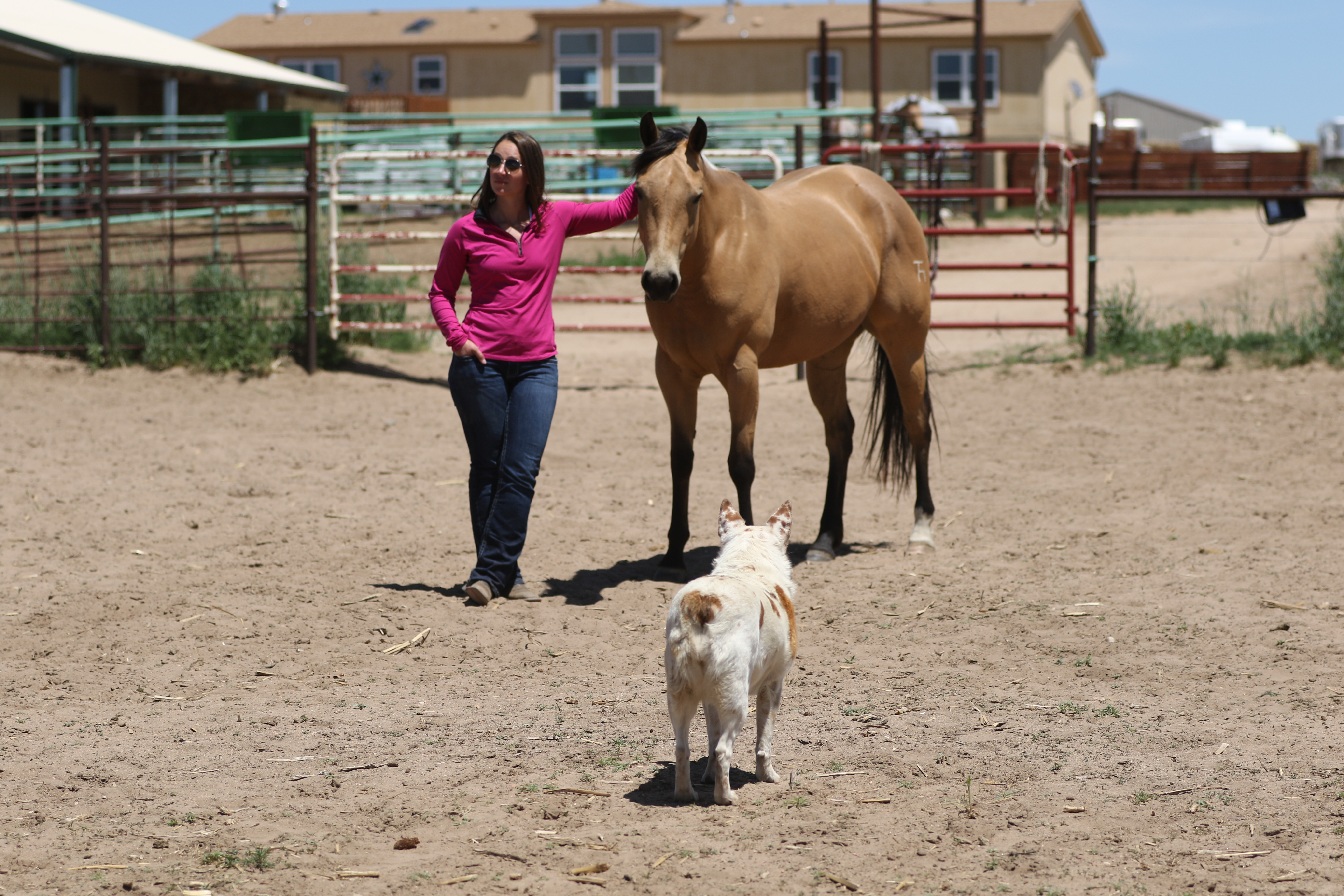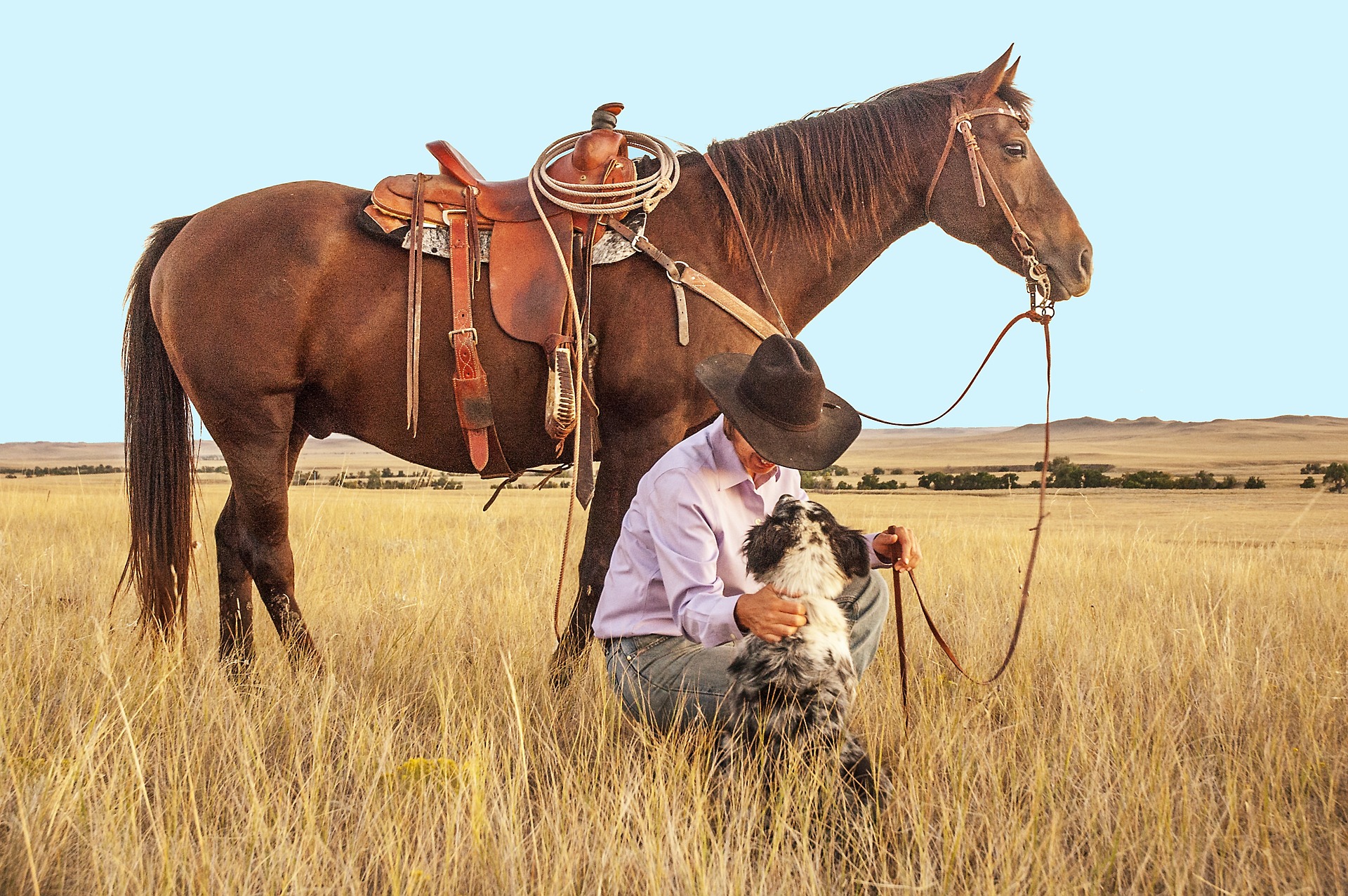
Safety First
Some dog breeds tend to be better around horses than others, but it also depends on the individual dog’s temperament and obedience. It’s ideal to introduce a dog to horses when he’s young, but that’s not always possible if you adopt an older dog. In either case, ask the breeder or previous owner about the dog’s history before adopting him. Is he skittish around people or other animals? Aggressive? Is he easily excitable or more mellow. and so on. Preferably, you want a dog that’s people-friendly and non-aggressive.
[READ: Hoof Trimming Hazards for Dogs]
Welcome to the barn.
Teaching your dog the barn and horse rules early on, at home, will ensure greater success in the long run for taking him to shows. First, allow him to get comfortable with his new environment by walking him (on a leash) around the barn and surrounding facilities, allowing him to take in the new sights and smells. Then, present him with your horse’s halter, headstall, or saddle blanket, so he can investigate a horse’s smell.
Fido meets Dobbin.
Put your horse in a round pen (one with open-fencing), turnout area, or paddock, so your horse is contained, but has the freedom to move at will. With a firm grip on the leash, allow your dog to slowly approach the horse. Observe your dog’s reaction. Is he showing signs of fear or aggression, such as barking, baring his teeth, shaking, or cowering? If he’s acting aggressive toward your horse, say “no” in a deep, loud voice and make him back up and sit. Then, verbally praise him and slowly approach your horse again. Repeat this until your dog calmly and quietly approaches the horse. This may take several days, weeks, or even longer. Time is not important. What’s vital is that your dog becomes familiar with horses without showing signs of aggression or fear.
“Exposed” introduction.
Outside an enclosure, have an experienced handler hold your horse. With your dog still firmly leashed, repeat the above steps. If your dog shows aggression, quickly and firmly correct him with a commanding “no,” back up, sit, wait.then repeat. Your horse and dog will likely want to smell one another. That’s OK, as long as you have a firm grip on your dog, while the handler has a tight hold on the horse.
R-E-S-P-E-C-T.
It’s imperative that your dog learns to respect your horse, for his safety and for that of your horse. Horses have binocular vision, meaning they have a blind spot directly behind them (and directly in front of them), and therefore can’t see your dog if he’s in one of those blind zones. If your dog’s loose and doesn’t know to respect a horse’s space, he could easily get kicked or stepped on. This especially applies to an overly playful or aggressive dog. We’ve heard many sad stories of dogs accidentally getting stepped on or kicked by a horse–in many cases leading to the dog’s death or serious injury.
Off-limits areas.
You also need to teach your dog to stay out of riding arenas, round pens, and paddocks. With you and/or others riding in an arena, having a dog on the loose is a dangerous situation. You’ll teach him this the same way you introduced him to your horse. With your dog on a leash, approach the arena. If he makes a run for it, firmly stop him and say “no,” back up, sit, repeat.

Continuing ed.
Especially if your dog’s not a quick study, you may have to firmly reinforce the rules for a period of time. If you have a young or excessively active dog, I strongly suggest obedience school and/or work with a professional dog trainer. And, worst-case scenario: Some dogs just aren’t “horse” dogs. It doesn’t mean they’re bad pets; they just may be better suited elsewhere.






